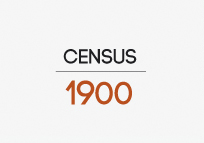




BELGIAN SOCIETY IN HISTORIC CENSUSES
Agricultural census 1895
Source criticism
The agricultural census of 1895 is a valuable source for diverse research. The results are unique due to the abundance of information, the aspired comprehensiveness, the degree of detail and the period they are related to. Several researchers have used the results of the census. Some of them have also critically investigated the source (including Paul Klep 1976, Guido De Brabander 1984, Seebohm Rowntree 1911). They uncovered several shortcomings related to the registration of the agrarian population. The size of the actual agricultural population is generally overestimated by the census. According to census instructions, only people who usually worked in agriculture and who were active more or less in a permanent context were eligible. It seems that this guideline was not applied consequently. Some researchers suspect that factory workers who had a small parcel of land that was worked by family members were also counted. With regard to the wives of farmers, the instructions were not very clear. Many of the women who were counted were not permanently employed. Some census agents counted the women as collaborating family members, others did not. Moreover, the concept of ‘family’ was vague and the statistics lacked a category for unpaid helpers.
The figures related to farmland were also subject to a critical evaluation. According to Gadisseur, all agricultural censuses suffer to a greater or lesser extent from under-registration of the surface area. He calculated the surface area of farmland (including woods and wastelands) by taking the total surface area of Belgium and deducting the space that was taken up by buildings, roads and waterways based on data from general statistics (including the Annuaire Statistique). He arrived at an underestimation of the total surface area by an average of 6.5%, with peaks in the provinces of Antwerp and East Flanders. His analysis shows that the agricultural censuses of 1846 and 1856 score the worst (-8%) and those of 1866 and 1880 score the best (respectively -5.6% and -3%). Gadisseur attributes the underestimation in 1895 to the lack of a census in 1895, which resulted in some important plots subject to counting being overlooked by local authorities (Gadisseur 1990).
The above-mentioned elements prove that the agricultural statistics from 1895 show deficiencies. Despite this, it remains a usable source of information. The census results related to business structure are more reliable than what was published in 1866 and 1880 (De Belder and Vanhaute 1993). All the above-mentioned authors have used the census results extensively for diverse research. As is the case with other sources, the user must be critical. In order to reach a balanced assessment, researchers must not lose sight of the aim of the census.
- Organisation of the census
- Source criticism
- Content of the internet tables
- Concepts